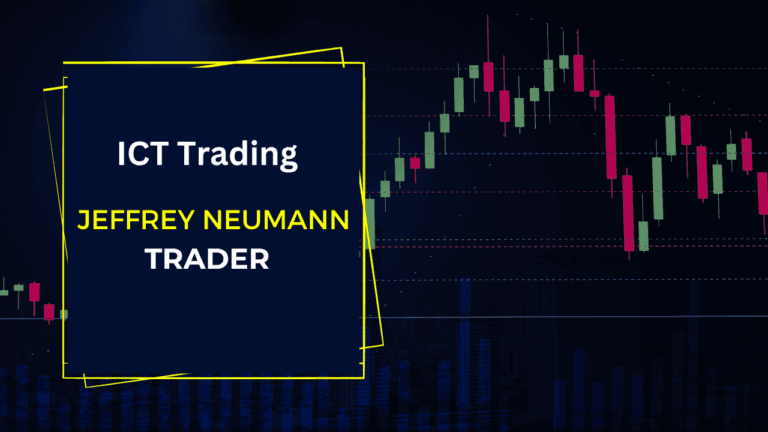Jerry Sanders- AMD Visionary Founder

Jerry Sanders, the co-founder of Advanced Micro Devices (AMD), has played a pivotal role in shaping the semiconductor industry. Under his leadership, AMD emerged as a formidable competitor to tech giants, revolutionizing the market with innovative products and strategic maneuvers. Jerry Sanders- AMD This article explores Sanders’ remarkable journey and his impact on both the technology and trading landscapes. By examining his principles and strategies, traders can glean valuable insights into identifying market opportunities, managing risks, and timing trades effectively—insights that align with the foundational concepts of Inner Circle Trading (ICT). Join us as we delve into the legacy of Jerry Sanders and discover how his approach can inspire a new generation of traders.
Who is Jerry Sanders?
Early Life and Education
Jerry Sanders was born on May 15, 1936, in the city of Los Angeles, California. He exhibited a keen interest in electronics and engineering from a young age, which led him to pursue a degree in Electrical Engineering at the University of California, Berkeley. His educational background laid a solid foundation for his future endeavors in the tech industry.
After completing his education, Sanders began his career at IBM, where he gained valuable experience in the semiconductor field. However, it was his entrepreneurial spirit that drove him to co-found AMD in 1969 alongside Jack Gifford, John Carey, and Tom Kersey. This decision marked the beginning of a new chapter not only for Sanders but also for the entire technology landscape.
Career Milestones
Under Sanders’ leadership, AMD quickly grew into a major player in the semiconductor industry. His vision was to create a company that not only competed with established giants like Intel but also brought innovation and affordability to the market. One of the significant milestones in Sanders’ career was the launch of the AMD 8080, which was compatible with Intel’s popular 8080 microprocessor. This move positioned AMD as a reliable alternative for companies seeking microprocessors, allowing them to avoid dependency on Intel.
Sanders was known for his charismatic leadership style, often emphasizing the importance of creativity and innovation within the company. His commitment to fostering a positive corporate culture led AMD to thrive in an era where many tech companies struggled. By promoting a team-oriented environment, Sanders ensured that his engineers and designers could collaborate effectively, resulting in groundbreaking products.
AMD: A Game Changer in Technology
Innovations and Products
Advanced Micro Devices (AMD) revolutionized the semiconductor industry through various innovative products. One of the landmark achievements during Sanders’ tenure was the introduction of the Athlon microprocessor in 1999. This product was the first to break the 1 GHz barrier, providing consumers with unprecedented processing power. The Athlon’s success propelled AMD into direct competition with Intel, challenging the latter’s dominance in the market.
Additionally, Sanders spearheaded the development of 64-bit processing technology with the launch of the AMD Opteron in 2003. This innovation allowed AMD to serve the server and workstation markets effectively, further establishing the company as a leading provider of high-performance processors. These advancements not only showcased AMD’s technical prowess but also set the stage for the company’s growth in various sectors, including gaming and data centers.
Impact on the Semiconductor Industry
Jerry Sanders’ influence on the semiconductor industry cannot be overstated. AMD’s competitive pricing strategy forced major players like Intel to reconsider their pricing models, ultimately benefiting consumers. Sanders believed that technology should be accessible to everyone, and this philosophy resonated in AMD’s product offerings. By prioritizing performance and affordability, AMD became a household name and a favorite among consumers and businesses alike.
Moreover, Sanders’ commitment to research and development led to significant breakthroughs in semiconductor technology, enabling faster and more efficient processors. His innovative mindset inspired a generation of engineers and entrepreneurs to think outside the box, fostering an environment where creativity thrived. Today, the legacy of AMD and Jerry Sanders continues to influence the tech industry, setting benchmarks for innovation and competition.
Jerry Sanders and Trading
The Connection to Inner Circle Trading
Jerry Sanders is not only known for his contributions to the tech industry through Advanced Micro Devices (AMD) but also for the lessons he can teach us about trading and investment strategies. His approach to business aligns closely with the principles of Inner Circle Trading (ICT), which emphasizes the importance of understanding market dynamics and making informed decisions. Just as Sanders navigated the competitive landscape of the semiconductor industry, traders can apply similar strategies to succeed in financial markets.
Sanders’ ability to identify market opportunities and adapt to changes in the industry provides valuable insights for traders. In ICT, one fundamental principle is to recognize patterns and trends, which was essential for AMD’s success under Sanders’ leadership. By analyzing market movements and consumer behavior, traders can develop strategies that mirror Sanders’ approach—prioritizing adaptability, foresight, and calculated risk-taking.
Trading Strategies Inspired by AMD’s Journey
Traders can learn a lot from the way Jerry Sanders led AMD through various market challenges. One key takeaway is the importance of diversification. Just as AMD expanded its product range to mitigate risks and capitalize on new opportunities, traders should consider diversifying their portfolios to reduce exposure to market fluctuations. This can involve investing in different sectors, asset classes, or geographical regions, ensuring that one’s investments are not overly concentrated in one area.
Another important lesson from Sanders is the value of innovation. In trading, this translates to being open to new strategies and techniques. For example, utilizing technical analysis tools and incorporating advanced trading methods can help traders stay ahead of the curve. Embracing change and being willing to adapt one’s strategies in response to market conditions is crucial for long-term success.
How to Use AMD Jerry Sanders’ Principles in Trading
Identifying Market Opportunities
To emulate Jerry Sanders’ approach to identifying market opportunities, traders can start by conducting thorough market research. This involves analyzing historical data, studying market trends, and understanding consumer behavior. By being proactive and staying informed about economic indicators and technological advancements, traders can position themselves to take advantage of emerging opportunities.
Using technical analysis is also vital. Traders should learn to read charts and identify patterns that signal potential market movements. Just as Sanders analyzed the semiconductor landscape to spot trends, traders can apply the same analytical mindset to the financial markets. Recognizing when stocks are undervalued or overvalued can provide lucrative trading opportunities.
Risk Management Techniques
Effective risk management is crucial for successful trading, and Jerry Sanders’ journey with AMD offers valuable lessons in this area. One effective technique is the use of stop-loss orders to protect investments. By setting predetermined exit points, traders can minimize losses and manage risks more effectively. This strategy mirrors how AMD navigated market fluctuations by making informed decisions and mitigating potential setbacks.
Another important aspect of risk management is position sizing. Traders should determine the appropriate amount to invest in each trade based on their overall portfolio and risk tolerance. Just as Sanders carefully evaluated AMD’s strategies and decisions, traders need to make thoughtful choices about how much to invest, ensuring they do not expose themselves to unnecessary risks.
Case Studies
Successful Trades Inspired by AMD’s Market Movements
To illustrate how Jerry Sanders’ principles can inform trading strategies, let’s examine a few successful trades inspired by AMD’s market movements. One notable example occurred during the launch of the AMD Ryzen processors in 2017. This product line introduced significant advancements in performance and efficiency, leading to a sharp increase in AMD’s stock price. Traders who anticipated this surge based on the company’s innovative trajectory were able to capitalize on the momentum.
By conducting thorough market research and following the news related to AMD’s product releases, traders could identify a buying opportunity before the stock price skyrocketed. This case exemplifies how staying informed about a company’s innovations can lead to successful trades, echoing the strategies that Jerry Sanders employed in driving AMD’s growth.
Lessons Learned from Failures
While there are numerous success stories, it is equally important to learn from failures. For instance, AMD faced challenges during the early 2000s due to aggressive competition from Intel, leading to significant market share loss. Traders who did not adequately assess the competitive landscape may have suffered losses during this period.
This experience underscores the necessity of due diligence and understanding market dynamics. Just as Sanders learned from AMD’s setbacks and adapted strategies accordingly, traders should be prepared to adjust their approaches in response to market conditions. Learning from both successes and failures equips traders with the insights needed to navigate the complexities of financial markets effectively.
Conclusion
In conclusion, Jerry Sanders and his journey with AMD provide valuable lessons for traders and investors alike. His commitment to innovation, strategic risk management, and adaptability in the face of market challenges are principles that can greatly enhance trading success. By embracing these insights, traders can identify market opportunities, apply effective risk management techniques, and learn from both successes and failures.
As the technology landscape continues to evolve, the lessons from Sanders’ leadership at AMD remain relevant. By adopting a proactive approach, staying informed about market trends, and applying sound trading strategies, individuals can work towards achieving their financial goals. Ultimately, the principles exemplified by Jerry Sanders serve as a guiding light for traders navigating the ever-changing financial markets.
Read More SMT in Trading- A Quick Guide
Frequently Asked Question
Who is Jerry Sanders?
Jerry Sanders is the co-founder of Advanced Micro Devices (AMD) and played a pivotal role in shaping the semiconductor industry. He is known for his innovative leadership style and commitment to making technology accessible and affordable.
How did AMD change the semiconductor industry?
AMD, under Jerry Sanders’ leadership, introduced several groundbreaking products, such as the Athlon and Opteron microprocessors. These innovations challenged competitors like Intel, leading to greater competition and lower prices for consumers.
What can traders learn from Jerry Sanders?
Traders can learn about the importance of market research, risk management, and adaptability from Jerry Sanders’ approach to business. His strategies emphasize identifying market opportunities and making informed decisions, which align with Inner Circle Trading (ICT) principles.
How can I identify market opportunities like AMD did?
To identify market opportunities, traders should conduct thorough market research, analyze historical data, and stay informed about industry trends. Utilizing technical analysis tools can also help recognize patterns that signal potential movements in the market.





